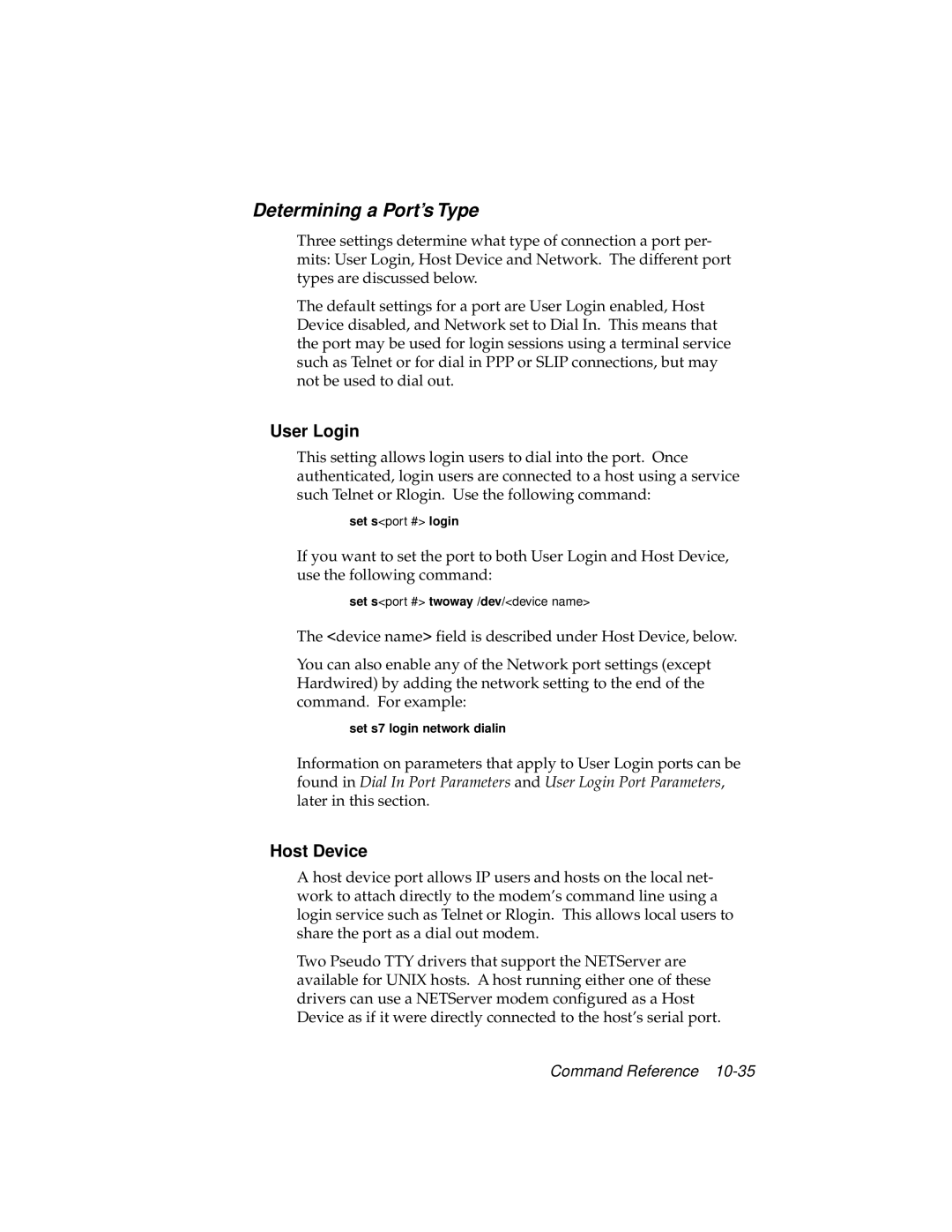Determining a Port’s Type
Three settings determine what type of connection a port per- mits: User Login, Host Device and Network. The different port types are discussed below.
The default settings for a port are User Login enabled, Host Device disabled, and Network set to Dial In. This means that the port may be used for login sessions using a terminal service such as Telnet or for dial in PPP or SLIP connections, but may not be used to dial out.
User Login
This setting allows login users to dial into the port. Once authenticated, login users are connected to a host using a service such Telnet or Rlogin. Use the following command:
set s<port #> login
If you want to set the port to both User Login and Host Device, use the following command:
set s<port #> twoway /dev/<device name>
The <device name> field is described under Host Device, below.
You can also enable any of the Network port settings (except Hardwired) by adding the network setting to the end of the command. For example:
set s7 login network dialin
Information on parameters that apply to User Login ports can be found in Dial In Port Parameters and User Login Port Parameters, later in this section.
Host Device
A host device port allows IP users and hosts on the local net- work to attach directly to the modem’s command line using a login service such as Telnet or Rlogin. This allows local users to share the port as a dial out modem.
Two Pseudo TTY drivers that support the NETServer are available for UNIX hosts. A host running either one of these drivers can use a NETServer modem configured as a Host Device as if it were directly connected to the host’s serial port.
